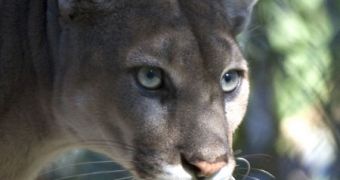The decline of the Florida panther has been slowed down in some places, and stopped in its tracks in others, thanks to a last-minute conservation effort that sough to prevent the beautiful animals from being wiped out.
The eastern panther population was 15 years ago estimated to include only several dozen animals, all of which were inbreeding, and suffering from genetic defects on account of that.
Naturally, biologists determined that the population would become unsustainable shortly, and that it would collapse. In order to prevent that, experts brought in eight female panthers from Texas.
After the animals were trapped, they were delivered to Florida, where they were released in the habitats of the existing panther population, Wired reports.
The local animals mated with the newly-arrived pack members, and so the genetic diversity of the offspring was ensured. Cases of malformed testicles, ultra-low sperm counts, and heart deformations are now observed in smaller numbers.
Experts say that the animals were so severely inbred that there was no new cub which did not feature some serious health conditions. Under these circumstances, any new diversity brought in the gene pool translated into healthier cubs.
“Those defects are still found, but the proportion is much lower now,” explains expert David Onorato, who is a researcher with the Florida Panther Project, at the Florida Fish and Wildlife Conservation Commission.
The scientist explains that the panthers are not out of the woods yet, so to speak. Their populations only exhibit slight improvements, and a continuation of the conservation efforts is absolutely necessary.
A paper describing the animals' current health status appears in the September 24 issue of the esteemed journal Science. The study was conducted by conservationists and geneticists alike.
The total panther population now numbers in excess of 100 individuals, which is several times below historical levels, but significantly above 1995 levels.
The thing about these animals is that they have no room for developing further. Populations would need to reach at least 1,000 individuals for the risk of inbreeding to disappear.
But there is no room for the animals in the state, and so translocations will be needed every decade or so, experts say.
“If the panther is going to continue to expand, it will rely on available habitat. How much habitat are we willing to set aside?” Onorato asks.
“ How much are we willing to coexist? It’s going to come down to that. Panthers aren’t going to be able to be an isolated population in South Florida. They need to expand,” he concludes.

 14 DAY TRIAL //
14 DAY TRIAL //